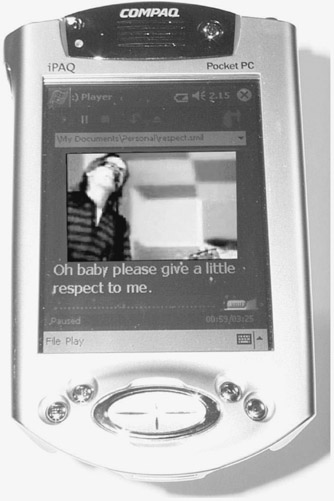24.6 Concluding Remarks
24.6 Concluding Remarks
In this chapter, we have reported on our experience in implementing a wireless Internet application designed to support the large-scale distribution of musical resources (from simple songs to synchronized karaoke clips, as shown in Figure 24.12). Our application allows mobile consumers to listen to songs/karaoke clips on handheld UMTS-enabled devices by exploiting the Internet as a vast storehouse of music resources. Experimental results were obtained that show that fast, large-scale wireless musical services may be provided by exploiting the UMTS technology. Measurements have been taken that confirm that both songs and karaoke clips (composed by audio, video, and scrolling text) may be downloaded from the Internet to UMTS devices in a few minutes on average. Whether the role of wireless networks is limited to extending the Internet reach or whether new applications may be enabled by wireless access are subjects of much discussion. [54], [55], [56] We claim that our wireless application demonstrates that exciting musical services may be implemented profitably using the wireless technology available today.

Figure 24.12: A screenshot of the mobile karaoke service.
[54]Bhagwat, P. and Sreenan, C.J., Eds., Future Wireless Applications, IEEE Wireless Commun., 9 (1), 6–59, 2002.
[55]Lawton, G., Browsing the mobile Internet, IEEE Comput., 34 (12), 18–21, 2001.
[56]Kanter, T., An open service architecture for adaptive personal mobile communication, IEEE Personal Commun., 8 (6), 8–17, 2001.
EAN: 2147483647
Pages: 239